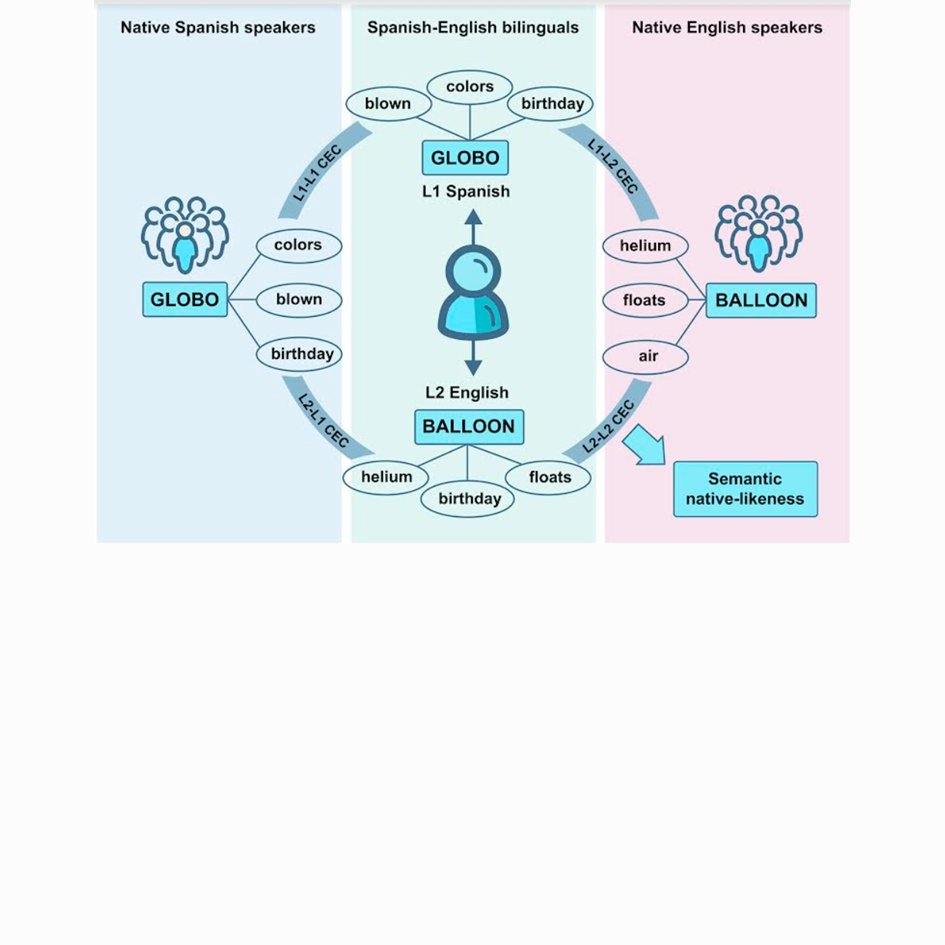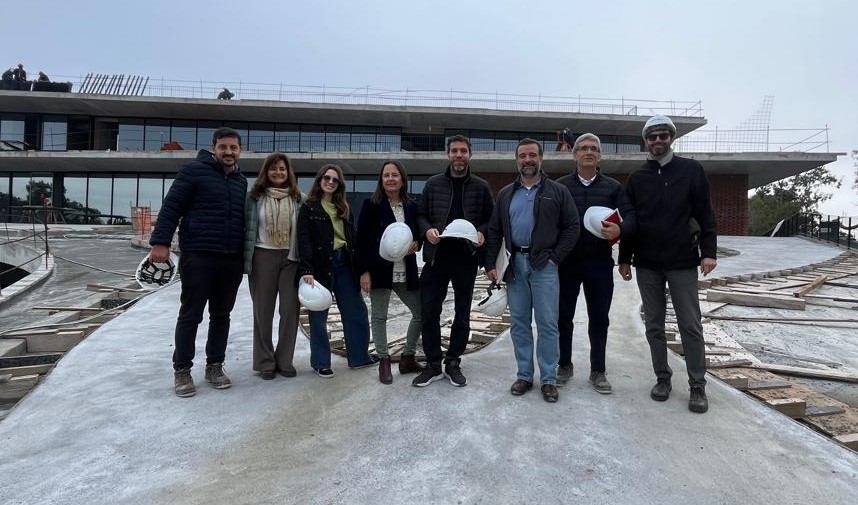Do we mean the same? Semantic native-likeness in highly proficient second-language users
Kogan, B., Agulla, L., Dottori, M., Amoruso, L., Vivas, L., & García, A. M. (2024). Do we mean the same? Semantic native-likeness in highly proficient second-language users. International Journal of Bilingualism, 1-18.
Pregunta de investigación
El parecido con los nativos (similitud entre usuarios nativos y no nativos de la misma lengua) depende del dominio de una segunda lengua (L2d). Sin embargo, las pruebas proceden principalmente de tareas fonológicas o sintácticas, lo que suscita una pregunta poco explorada: ¿puede un mayor L2d conllevar también una organización de la memoria semántica más parecida a la de los nativos?
Metodología
Pedimos a bilingües con alto y bajo nivel de competencia que describieran conceptos en su segunda lengua (inglés) y en su primera lengua (español). A continuación, comparamos sus respuestas con las normas de estructura semántica de los hablantes nativos de cada lengua y obtuvimos medidas de semejanza semántica nativa mediante una medida de proximidad semántica validada.
Datos y análisis:
Examinamos si las puntuaciones semánticas de semejanza nativa discriminaban entre niveles altos y bajos de L2d a nivel de grupo (mediante estadística inferencial) y a nivel individual (mediante análisis de aprendizaje automático).
Resultados:
Encontramos que las asociaciones semánticas en inglés eran más parecidas a las de los nativos en personas bilingües con un nivel alto de L2d que en aquellas con un nivel bajo de L2d. Los análisis de aprendizaje automático mostraron que este patrón era altamente consistente entre sujetos individuales. Las respuestas en español no difirieron entre grupos.
Originalidad:
Este es el primer estudio que evalúa la semejanza semántica nativa a través de asociaciones concepto-característica en bilingües de alto y bajo L2d, tanto a nivel grupal como individual.
Importancia:
Nuestros hallazgos sugieren que un mayor L2d conlleva una organización de la memoria semántica más parecida a la de los nativos, lo que aporta información a los modelos de cognición bilingüe y sus vínculos con variables relacionadas con la experiencia.
Para acceder al artículo, hacé click aquí.
Do we mean the same? Semantic native-likeness in highly proficient second-language users
Kogan, B., Agulla, L., Dottori, M., Amoruso, L., Vivas, L., & García, A. M. (2024). Do we mean the same? Semantic native-likeness in highly proficient second-language users. International Journal of Bilingualism, 1-18.
Research question:
Native-likeness (similarity between non-native and native users of the same language) depends on second language proficiency (L2p). However, evidence comes mainly from phonological or syntactic tasks, prompting an underexplored question: can higher L2p also entail a more native-like organization of semantic memory?
Methodology:
We asked high and low proficiency bilinguals to describe concepts in their second (English) and first (Spanish) language. We then compared their responses with semantic structure norms from native speakers of each language, and derived measures of semantic native-likeness through a validated semantic proximity measure.
Data and analysis:
We examined whether semantic native-likeness scores discriminated between high and low L2p levels at the group level (via inferential statistics) and at the individual level (via machine learning analyses).
Findings:
We found that semantic associations in English were more native-like in high than in low L2p bilinguals. Machine learning analyses showed that this pattern was highly consistent across individual subjects. Responses in Spanish did not differ between groups.
Originality:
This is the first study assessing semantic native-likeness through concept-feature associations in high and low L2p bilinguals, both at the group- and the individual-level.
Significance:
Our findings suggest that increased L2p entails a more native-like organization of semantic memory, informing models of bilingual cognition and its links with experience-related variables.
To access the full paper, please click here.



